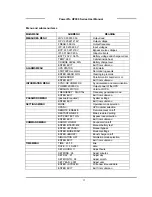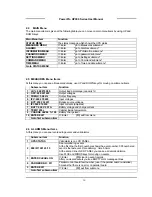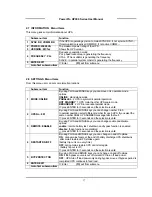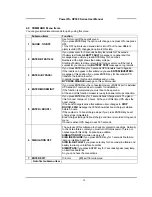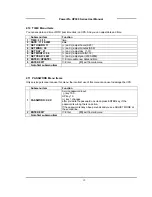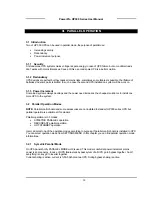
5
PowerPro HP300 Series User Manual
RECTIFIER:
The first conversion stage (from AC to DC) uses a 3 phase, fully controlled rectifier to convert
the incoming mains supply into a regulated DC BUS BAR. The DC BUS BAR produced by the rectifier
provides both battery charging power and power to the inverter section.
BATTERY GROUP:
It keeps as an reserve DC power supply, for the inverter in case of mains failure.
INVERTER:
It is made by utilizing the latest technology of power transistor (IGBT) and pulse width
modulation (PWM). Inverter converts dc bus voltage into (second conversion) an alternative voltage like line
voltage. And provides this voltage and frequency being fixed.
STATIC TRANSFER SWITCH (STATIC BY-PASS):
Two types of bypass circuitry is available for HP 300
series UPS ,
•
Full static switch for parallel systems
•
Half static switch for normal UPS
The circuit block annotated contains an electronically controlled switching circuit, which enables the
critical load to be connected either to inverter output or to a by-pass power source via the” static by-pass
line”. Normally at standart models, the load is connected to the inverter via a contactor K1 (controlled by
the static switch circuits); but in the event of a UPS overload, or inverter failure, it is automatically
transferred to the static by-pass line.
In parallel systems the second static switch is builded ,from inverter output ,to load.
MECHANIC TRANSFER SWITCH (MAINTENANCE BY-PASS):
A second, manually controlled,
”maintenance by-pass” supply is also incorporated into the UPS design. Its purpose is to enable the critical
load to be powered from the mains (by-pass) supply while the UPS is shut down for maintenance or
troubleshooting.
The load is unprotected against mains power supply aberrations or failure when it is connected to either the
static by-pass or maintenance by-pass supply.
BATTERY CIRCUIT BREAKER:
At 10-15-20-30 kVA models battery circuit breaker is optional , if distance is
long between UPS and battery group you must install this circuit breaker. There is a fuse loadbreak switch
(externally mounted ) between the UPS and the batteries. The battery is connected to the DC BUS BAR
through a fuse loadbreak switch . This switch has two built-in fuses (one for battery plus, and one for battery
minus). This circuit breaker is closed manually.
Also
electronic controlled battery circuit breaker
(optional) available. This circuit breaker is closed
manually but it contains an under voltage release coil which enables it to be tripped from the UPS control
electronics following certain detected faults. It also has a magnetic trip facility for overload protection.
BATTERY GROUP (CABINET):
The batteries associated with the UPS are generally housed in a purpose-
built cabinet located along-side the main UPS equipment. For a long-term efficiency from the batteries, keep
them in room temperature (20
°
C).
1.2.1 The Operating Modes of UPS
A. Normal Operation (If there is a main) :
All relevant power isolators and circuit Breakers
Closed (except mechanical bypass circuit breaker), the load is powered by the UPS. Also during
the normal operation battery charges. This is made by the UPS’s rectifier.
B. Battery operation:
During this operation Inverter part of the UPS is converting DC power to AC power ,and feeding
the load. Critical load works till the batteries are being empty. At the end of charge UPS gives
”A7
BATTERY LOW”
alarm.If the batteries are fully discharged UPS gives
“A5 BAT.AUT END”
message and shutdown. When a normal voltage comes to the mains the UPS turns back to work
normally.

















